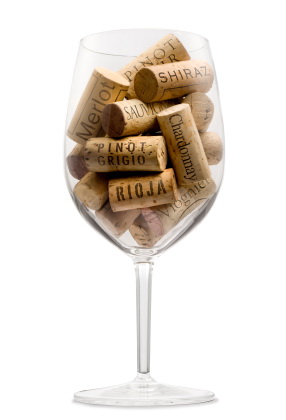 Eyes closed, you breathe deeply, searching for the exotic aromas of pinot noir in your glass. Instead, an acrid smell jabs its way up your nose. This is not the essence of fleshy cherries rolling across on a bed of violets you were expecting. It’s more like burnt matches. Is it you or the wine?
Eyes closed, you breathe deeply, searching for the exotic aromas of pinot noir in your glass. Instead, an acrid smell jabs its way up your nose. This is not the essence of fleshy cherries rolling across on a bed of violets you were expecting. It’s more like burnt matches. Is it you or the wine?
It’s probably the wine, but how can you be sure, especially when you’re debating whether or not to send the bottle back in a restaurant? Just as wine can absorb and exude exotic aromas, it can also pick up and give off pungent odours. The key is to recognize the most common wine faults.
Most wine faults are caused by either sulphur compounds or bacteria. The most common fault, corked wine, results when fungus interacts with a chemical used to sanitize corks and produces a compound that taints the wine. You can recognize corked wines by their wet cardboard, musty, mildewy aroma.
Too much oxygen is also an enemy of wine, as it is to many other substances. Air makes nails rust, fruit turn brown and wine taste stale and turn a deep yellow or brownish colour. Oxidized wine, the second most common fault, occurs when
the wine is overexposed to air while being made, aged, bottled or stored.
Of note, visual characteristics such as cloudiness and crystals are not faults, and they do not affect the wine’s smell or taste adversely. Cloudy wines, with suspended proteins, often haven’t been filtered or fined, two winemaking steps that can remove these particles. However, these techniques are also believed to remove the wine’s character so it’s often vintners of fine wine who forgo using them in the interest of more natural winemaking.
Crystals, or wine diamonds, are tartrates that can form in wines that haven’t been cold stabilized, a process that chills the wines below their natural cold stable point to purposely create the crystals and then remove them. Again, more natural winemaking has decreased the use of cold stabilization, and thus increased the incidence of the crystals. While they are not detrimental to the wine, some consumers believe them to be glass shards and return the bottle.
Wine Faults Chart
These measurements are not scientific, but give an approximation how a faulty wine may smell. They are meant to be smelled only, and not consumed ;)
Wine Faults from Fungus |
||||
|
Fault |
Cause |
Telltale Signs |
Simulate it |
|
|
Corked |
Yeast reacts with chemicals in the cork to produce the compound that taints the wine: 2,4,6 trichloroanisole (TCA) |
smell: wet cardboard, musty or mould-like
touch: squeeze the cork to see if it’s dry, which may mean it’s oxidized
appearance: this has nothing to do with cork particles floating in your wine – these should be removed or you should ask for another glass of wine |
Mouldy cork (no wine required) |
|
|
Bret |
Bret from using the Brettanomyces strain of yeast during fermentation, which has been popular in Burgundy, France and elsewhere. Winemakers who wish to avoid this often use the Saccharomyces strain of yeast. |
smell: earthy when it is barely present and “barnyard” when it’s overwhelming
This one is controversial given that some winemakers (and drinkers) think it’s attractive to have a little barnyard on the nose. I don’t. |
Yonder pasture strewn with cow patties on a warm summer’s day |
|
Wine Faults from Bacteria |
||||
Oxidized |
overexposure to air when insufficient or no sulphur dioxide is present during winemaking |
smell: cooked like stewed fruit or damp straw in low-acid wines and burnt in high-acid wines; with extreme smells of vinegar or nail polish remover
appearance: bright yellow or brownish in white wines |
Amontillado or Oloroso sherry: this is not a fault in this fortified wine, but part of its desirable character as the process is controlled and in balance with the rest of the wine’s character |
|
|
Maderized |
heated or baked |
smell: cooked, baked
appearance: brownish |
Madeira: again not a fault in this fortified wine but part of its desired character |
|
|
Reduced |
absence of oxygen |
smell: stagnant water or something decomposing |
Yonder stagnant swamp |
|
|
Acetified |
acetobacter bacteria converts alcohol into acetic acid
|
smell: vinegar The sensory threshold for acetic acid is about 700 mg/litre. Between that and about 1.2 g/litre, where it becomes unpleasant, there’s debate over the amount of volatile acidity (VA) that’s acceptable or desirable in wine. |
Wine mixed with 2-5 ml of vinegar |
|
|
Stemmy or bitter
|
Grapes that have been pressed too hard may crush the seeds which have a bitter taste |
smell: bitter, green of grape stems and seeds |
Split open and smell a grape stem |
|
|
Green |
using immature grapes |
taste: unripe grapes, tart |
Wine mixed with one shredded blade of green grass, don’t consume |
|
|
Woody
|
overuse of oak in aging the wine |
smell: wet wood, pine chips |
Wine mixed with freshly shaved pine or oak chips |
|
|
Mouldy |
using mouldy grapes or mould in the winery |
smell: mouldy |
Mouldy piece of cloth (no wine required) |
|
|
Butyric Acid |
malolactic acid fermentation produces the wrong compounds |
smell: spoiled Camembert cheeses, sour |
spoiled Camembert cheese |
|
|
Yeasty
|
natural yeast can take over or excessive contact with lees |
smell: pronounced yeast in faulty wines, light aroma is part of good champagne and champagne method sparkling wines |
Glass of champagne: not a fault in this wine |
|
|
Mousy |
Best smelled after rubbing a few drops briskly between the palms |
smell: mouse or wet wool |
Wet wool |
|
|
Geranium |
addition of sorbic acid to stabilize the wine before malolactic fermentation has completed can create smell |
smell: flowery, geranium-like |
Red wine mixed with piece of split geranium stalk |
|
|
Filter-pad or paper |
filter-pads or filtering materials in prolonged contact with wine
|
smell: papery or wet cardboard, chemical
taste: may produce a chalky astringent tactile sensation in mouth |
Leave a several strips of torn cardboard to soak in the wine overnight |
|
Wine Faults from Sulphur Compounds |
||||
|
Sulphur Dioxide (SO2) |
too much SO2 used as a preservative in winemaking, often in cheap white wine |
smell: water from sulphur springs
taste: unpleasant prickly feeling in the throat and nose |
White wine mixed with 250 mg of sulphur dioxide |
|
|
Hydrogen Sulphide (H2S) |
yeast reduces the sulphur residue dust on grapes used to control powdery mildew to H2S or there is a nutrient deficiency in the grape juice during fermentation |
smell: rotten eggs, rotten cabbage |
eggs that have gone bad
Tip: you can reduce this smell somewhat by putting a well-washed penny in your glass of wine |
|
|
Mercaptan |
H2S isn’t removed early enough during the fermentation and then it binds to the oxygen (the process is reversible) |
smell: burnt rubber, skunky, sewage |
The rubber of a hot water bottle |
|
© 2013 by Natalie MacLean at www.nataliemaclean.com. All rights reserved.
Here are my favourite Faultless Wines for your drinking pleasure.
If you’d like to get serious about identifying wine faults, a web site called Applied Sensory offers Wine Fault Aroma Wheels like the one below (but legible) in English, French, Spanish and Portuguese as well as faults wheels for beer and olive oil. They also have a nifty mobile app for iPhone and Android.
You may also be interested in the Wine Aroma Wheel to identify the good aromas in wine.







